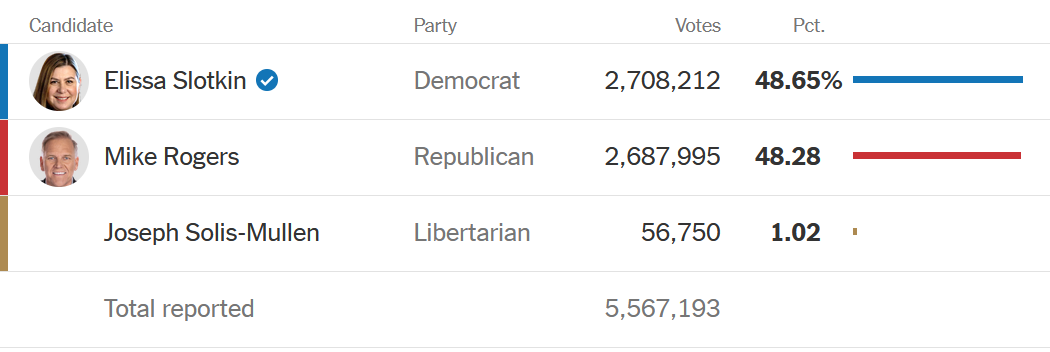
Resolves to whichever race ends up being the tightest, measured by final vote counts. If the closest Senate race is ultimately one not on this list, I will still resolve to whichever of these 8 is the closest.
i.e. if most races are won by 2%+ points but one race is won by just 1%, then that one race would be considered the closest.
Trading closes November 4th.
Inspired by: Tracking the Senate's Most Competitive Races (NYT)
🏅 Top traders
| # | Name | Total profit |
|---|---|---|
| 1 | Ṁ417 | |
| 2 | Ṁ55 | |
| 3 | Ṁ39 | |
| 4 | Ṁ37 | |
| 5 | Ṁ17 |
@HelloWorld @mods This question was resolved incorrectly. The margin in Michigan is D+0.37, however the margin in Pennsylvania is currently R+0.34 (already closer than Michigan) and a recount is being held in Pennsylvania which could change the margin further.


@HelloWorld That's a rounding error derived from the fact NBC only goes to one decimal point. If you take the margins that NBC gives you and divide them by the total votes you get:
Michigan: 19763/5,572,822=0.00354631818
Pennsylvania: 23158/6,936,691=0.0033384794
Pennsylvania is closer. Regardless, when it's this close you shouldn't have resolved until they finished counting votes. Pennsylvania still has tens of thousands of votes to count and a recount ahead of it.
This market has a very strange set of options. Texas is excluded in favor of Maryland (which is not what the NYT does). In my opinion, Florida also has a >5% chance - particularly in scenarios where Democrats beat their polls. So note that this market may not actually have the closest Senate seat. (According to the criteria, it will then resolve to the closest on the list, which is most likely to be Montana in this kind of scenario.)
👍
👍